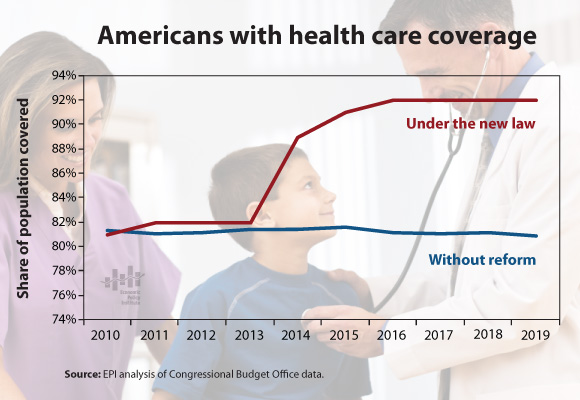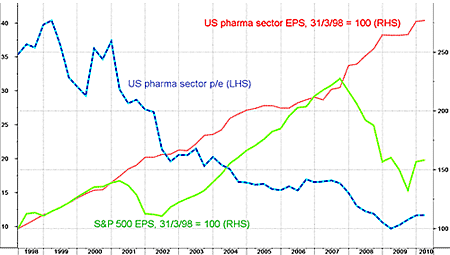On March 23, 2010 President Barack Obama signed the historic healthcare reform bill into law. This marked the end of many months of wrangling between the Republicans and Democrats. The $938 Billion bill brings many significant changes to the US healthcare system in decades.
The $938B bill would be financed by tax increases and reduction in Medicare spending according to the Congressional Budget Office(CBO). CBO also predicts that the federal deficit would be reduced by $143 billion in the first 10 years. The bill would also extend heath insurance to 32 million uninsured Americans.

From an EPI article :
“Under the new law, the portion of Americans with health insurance coverage will rise to 92% by the year 2016 and remain steady at that level in future years. As a result, the number of Americans with no health insurance will fall from 50 million today, to about 23 million in 2019, even as the population grows.”
Some of the obvious beneficiaries of this new law are companies related to the healthcare sector such as health insurers, drug companies, hospitals, medical device makers, etc. Though many provisions of the healthcare reform bill does not become effective immediately, these companies stand to benefit from higher business growth over the next few years.
From an investment standpoint, the stocks of US drug makers looks cheap now according to a piece in Moneyweek.
Source: Bloomberg via Moneyweek
US drug stocks are very cheap for the following reasons:
1. Investors’ worries about sales collapse due to expiration of patents on blockbuster drugs are overdone and are already priced into stock prices.
2. As the EPS of the pharma sector went up over the past few years, the P/E has been dropping steadily as investors withdrew from this sector. The P/E fell from over 90 in 1999 to about 11.5 now. Also the S&P Pharma index is down 10% lower than where it was 12 year ago.
3. Unlike the EPS growth of S&P 50, the drug companies have been growing their profits at a consistent pace over the last 12 years.
4. The new law will not set any government price controls and additional regulations will not be imposed on drugs industry.
5. Prescription drug prices are 30-50% higher in the U.S. compared to other OECD countries (Source: Disparities in health expenditure across OECD countries:
Why does the United States spend so much more than other countries?, OECD )
The complete list of drug stocks trading in the NYSE can be found here
Health insurers will benefit due to the following reasons:
1. Additional 32 million Americans will be required to purchase insurance.
2. New restrictions such as the placing of lifetime limits on coverage or denying adults based on pre-existing conditions will not become effective until 2014.
3. Many insurers are expected to raise premiums in order to maintain profits. Recently Anthem Blue Cross raised premiums by as much 39% in California for some customers.
4. Some insurance companies will go out of business since they would not be able to compete under the new regulatory environment and others may merge with the big players leading to a bigger consolidation in the industry.
The five largest health insurers in this country are Aetna(AET), Cigna(CI), Humana (HUM), UnitedHealth Group(UNH) and Wellpoint(WLP).
Medical device makers and healthcare facilities also stand to profit from this new legislation since in general more medical procedures are performed in the U.S. than other OECD countries as the table shows below.Many of the diagnostic tests such as MRI are very expensive and are done even when not required as part of the “defensive medicine” strategy followed by healthcare professionals. Threat of lawsuits forces doctors to perform unnecessary tests generating billions of dollars in revenue for hospitals, medical diagnostic companies and others. Hence it is not surprising to see that the US also has the highest number of MRI units and CT scanners in the world after Japan.
NYSE-listed stocks of Medical Equipment makers, healthcare facilities and biotech & Drug makers can be found here and here and here.

